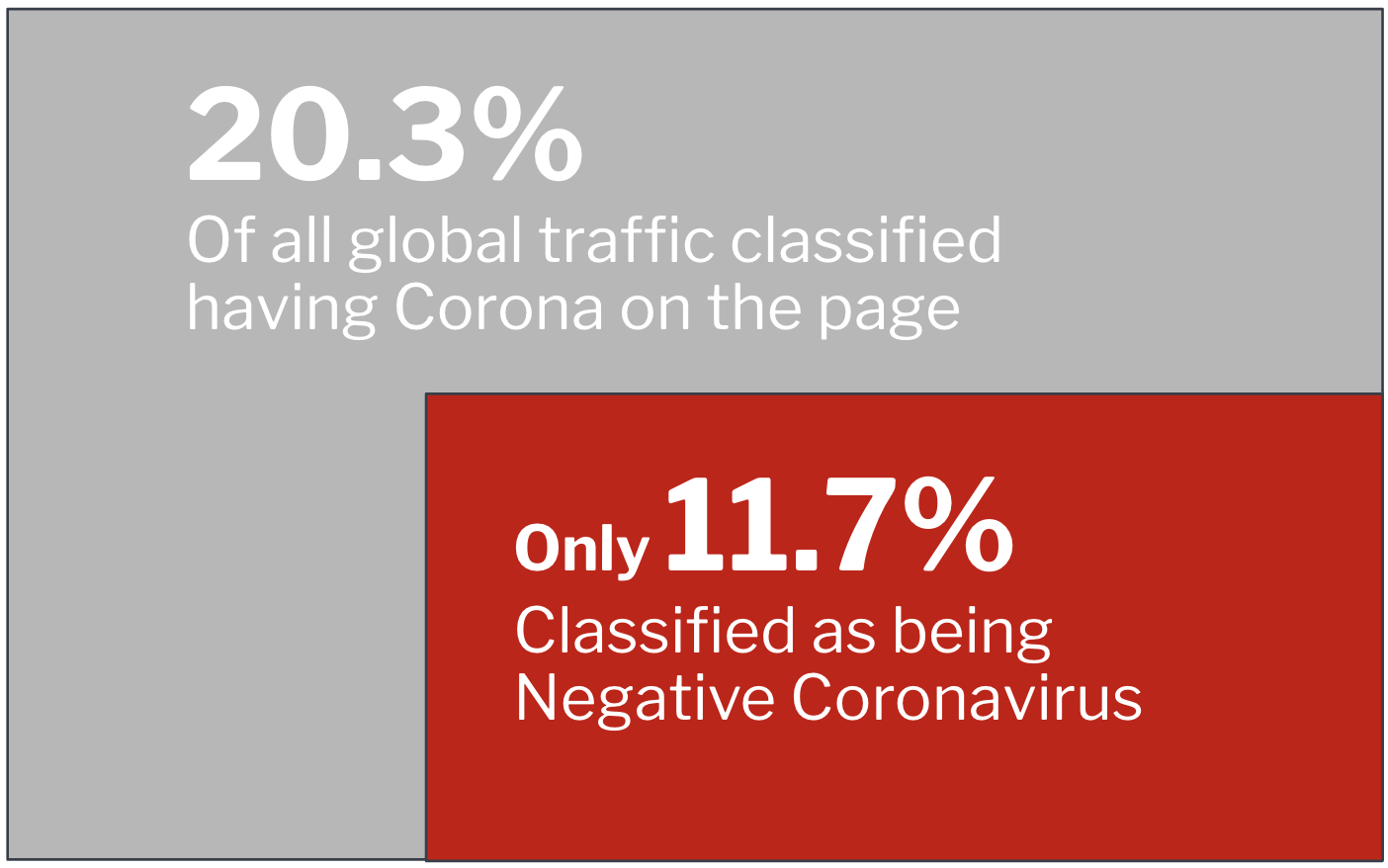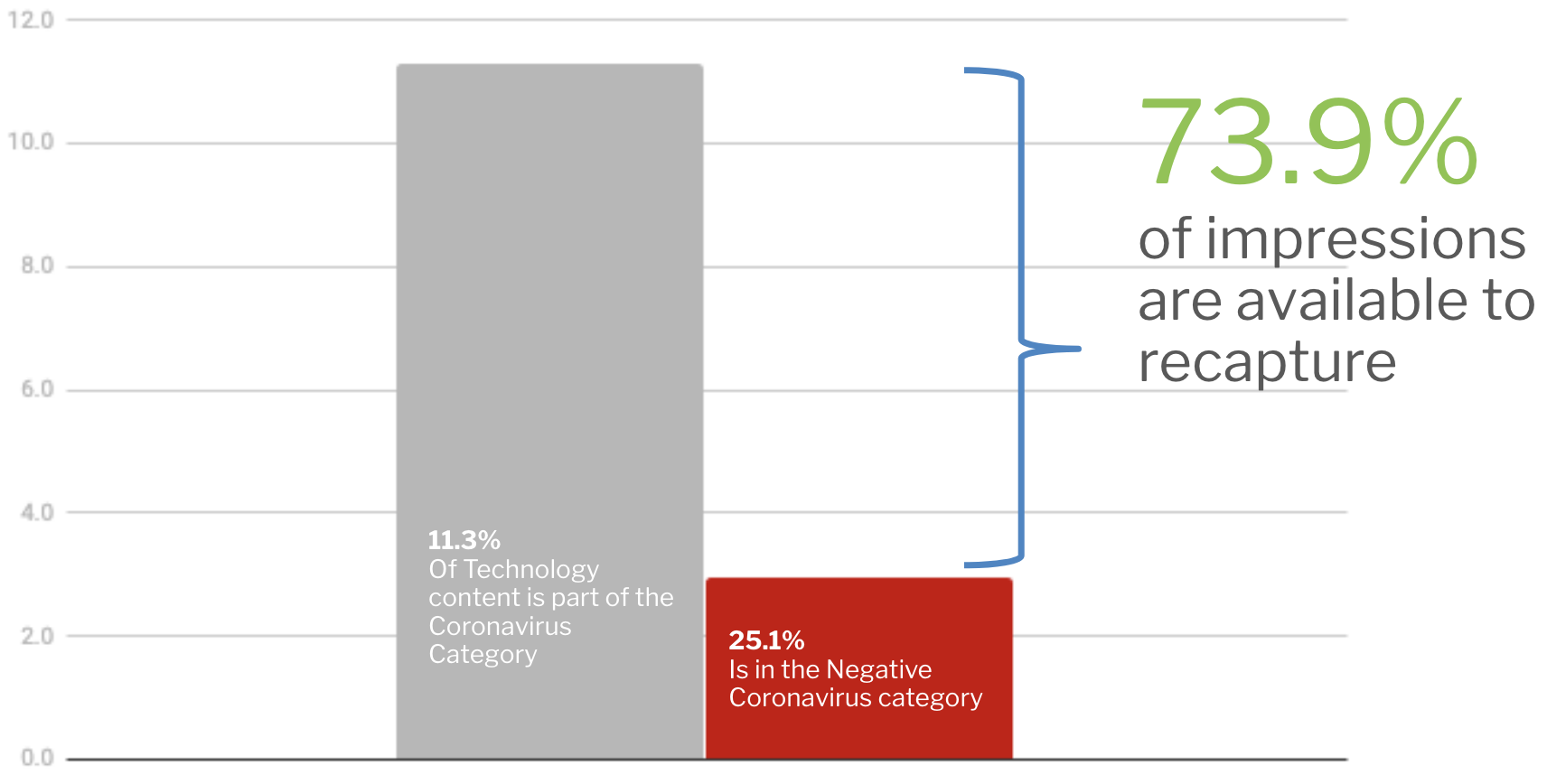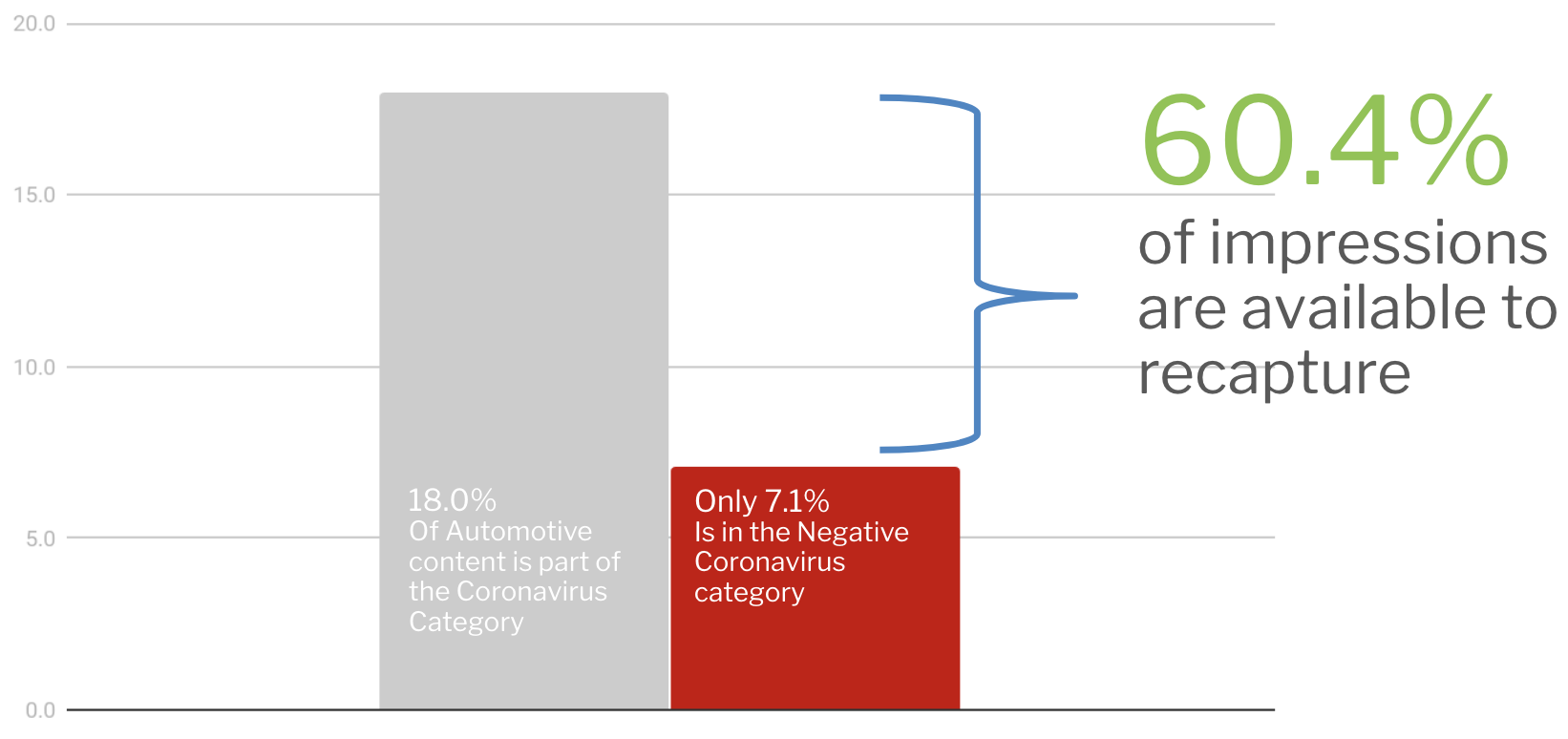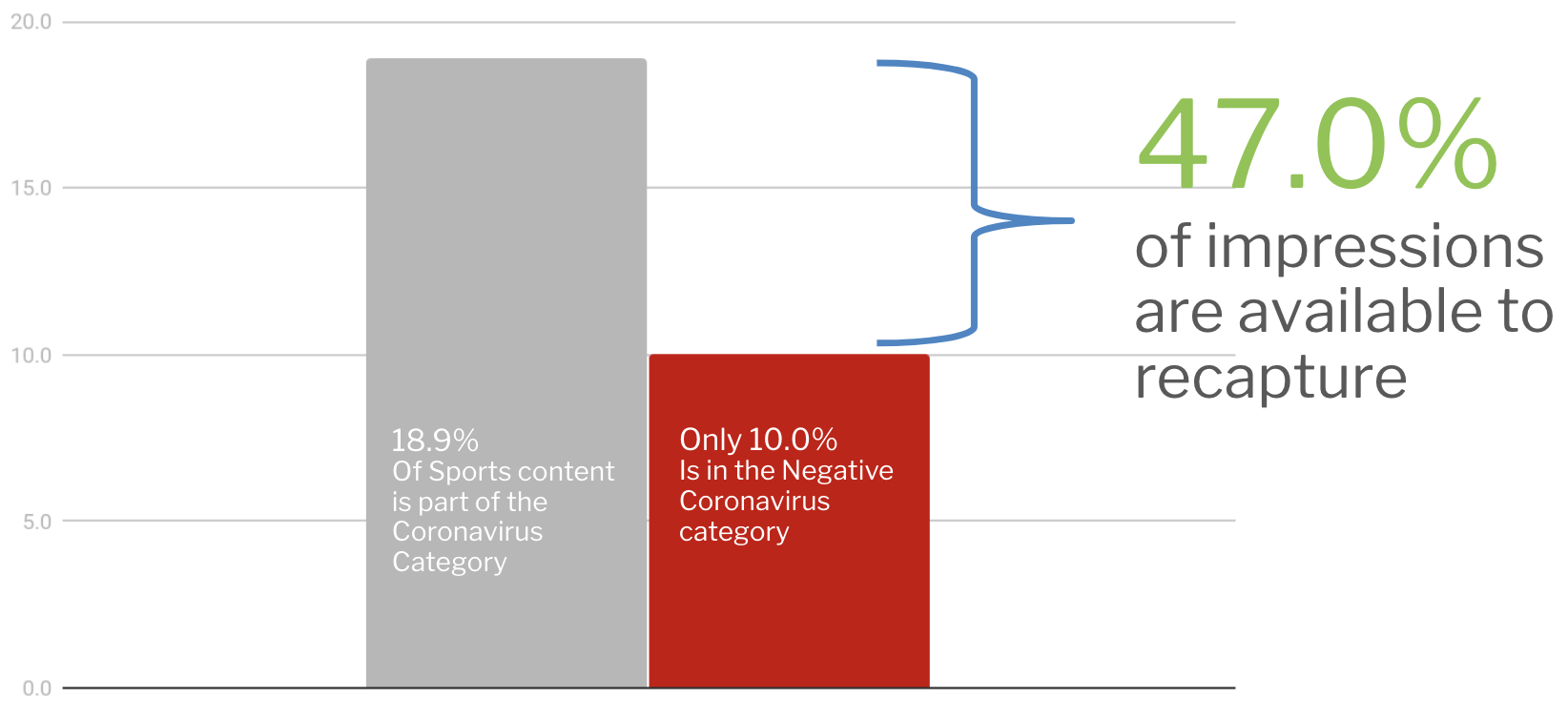Advertising through coronavirus (COVID-19)
Resources for advertisers
The dominant story in the news since January has been the outbreak of coronavirus (COVID-19) and its eventual pandemic status. For agencies and advertisers, the volume of coverage has led many to create blocklists of terms related to the virus—with some ceasing all ad spend on publishers.
These extreme measures were initially perceived to prevent damage to a brand’s reputation that could occur if their ads are served on pages alongside articles about the tragedy and economic impact of this global crisis.
However, sweeping blocklists significantly reduce the impression pool and create missed opportunities for advertisers.
This is uncharted territory for advertising and a new normal that advertisers must be in a position to react and chart a course through. In order to do that they need to understand both what can be expected as well as the tools available to them to help.
Evolution of a global pandemic
The reaction to the crisis has shifted significantly over the months since the news of the outbreak was first reported. There are three phases of coverage that will play out over time:
1) Awareness of the problem
News about the spread of COVID-19 in countries throughout the world prompts advertisers to set up blocklists for “coronavirus” and other related terms.
2) Reacting to the widespread impact
With shelter-in-place guidelines issued, content starts to shift from news about the virus to news about living within our new reality.
3) The humanity of the crisis
In the process of navigating the crisis, stories of courage, compassion, and community will emerge, revealing how people come together from a distance.
As we pass through each phase, the path for advertisers becomes clear. It just requires a different approach to choosing ad placements.
The opportunity in this new normal
With such a large amount of coverage about coronavirus and the global crisis, advertisers need to be able to access more of the available impression pool without risking their brand’s reputation.
Fortunately, brand safety doesn’t mean you have to eliminate all content or all content that mentions coronavirus.
A layered approach that factors in the category of content about coronavirus along with pre-bid contextual targeting can allow you to recapture impressions.
And the data supports this approach.
The state of coronavirus content
It’s clear that phase two is happening now, with content about home learning, remote work, and so much more about coping while maintaining physical distance from others. Now is the time for advertisers to re-think their keyword blocking approach and look at other practices.
The amount of content intended to help people thrive during such upheaval grows every day. But how much is really safe for advertisers?
According to a new report from Peer39 that analyzes global data based on over 450 million daily unique pages, 42.3% of all coronavirus content is safe.

That means if you’re using a coronavirus keyword list as a universal block, you can open up over 40% more volume if you avoid only the Negative Coronvirus category.
Consider objectives when choosing your approach
Just as keyword blocking may lock you out of opportunities, opening up to all but Negative Coronavirus could be too much content that isn’t relevant to your needs. This is where a layered approach can be an advantage.
By choosing the relevant categories for your strategy, and eliminating only Negative Coronavirus content for those categories, you can maximize the impact of your advertising.
In the Peer39 report, some of the top categories of content that advertisers can recapture impressions include technology, automotive, and sports.
Technology
The largest recapturable pool of impressions is in the technology category. Only 25.1% of tech content is negative for coronavirus, which leaves 73.9% available to recapture.

Automotive
In the automotive category, 7.1% of content is negative for coronavirus, leaving 60.4% available to recapture.

Sports
With only 10% of sports content in the Negative Coronavirus category, that leaves 47% of impressions available to recapture.

Peer39 categories are created using a combination of multiple algorithms applied to the text available on the page and the URL. Advertisers overlay additional semantic brand safety categories if needed.
The new coronavirus category is a standalone category that indicates the content is about the coronavirus. This is determined based on the density, and the optimal number of instances and combinations of related keywords (COVID-19, coronavirus, pandemic, etc.) that mean coronavirus right now.
Peer39 built this new category to give advertisers the ability to separate out coronavirus from any other context and offer a tailored approach to targeting. These categories can be used independently or combined with any other Peer39 categories including industry-specific safety categories or custom ones created specifically to meet your needs.
